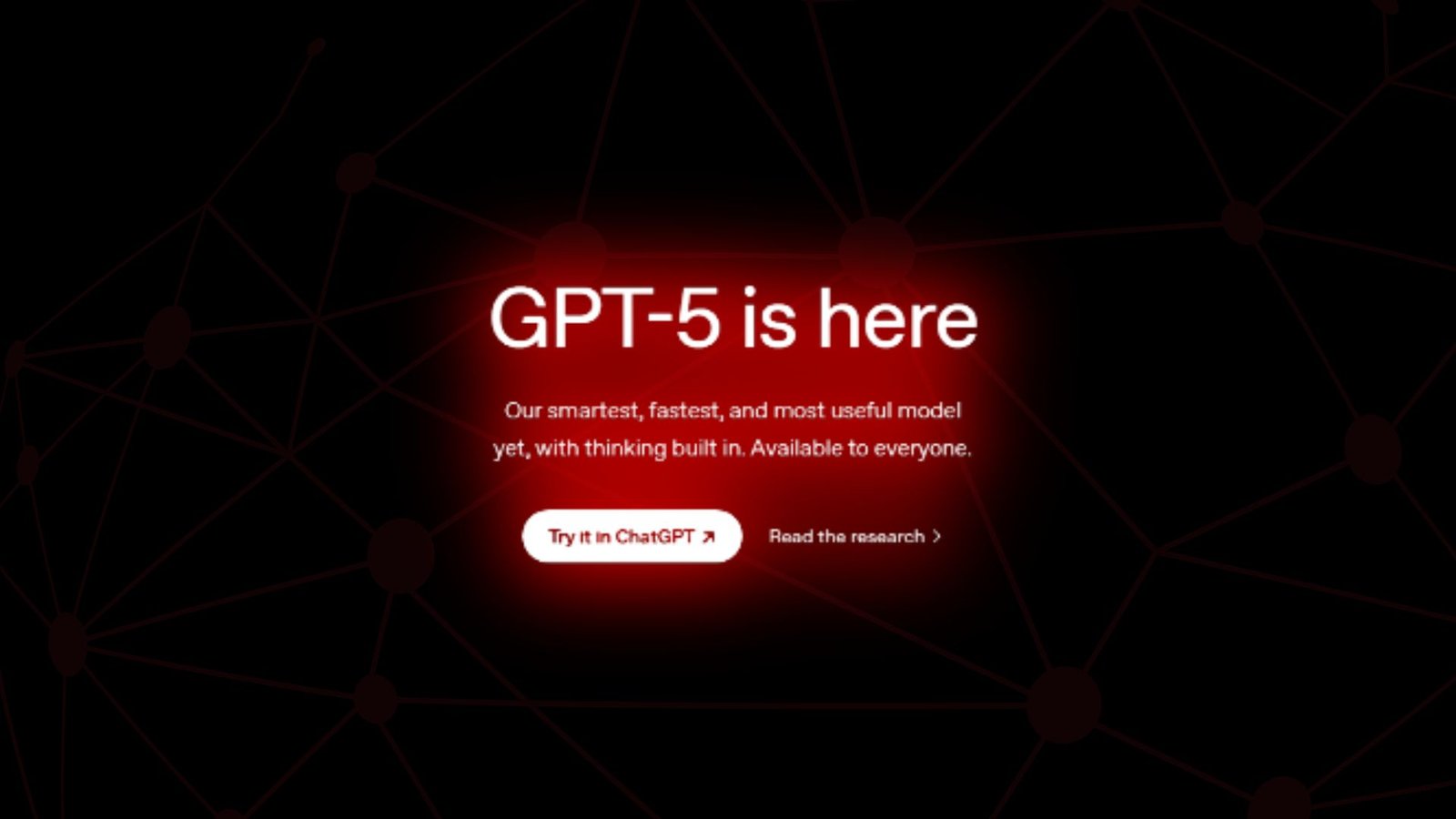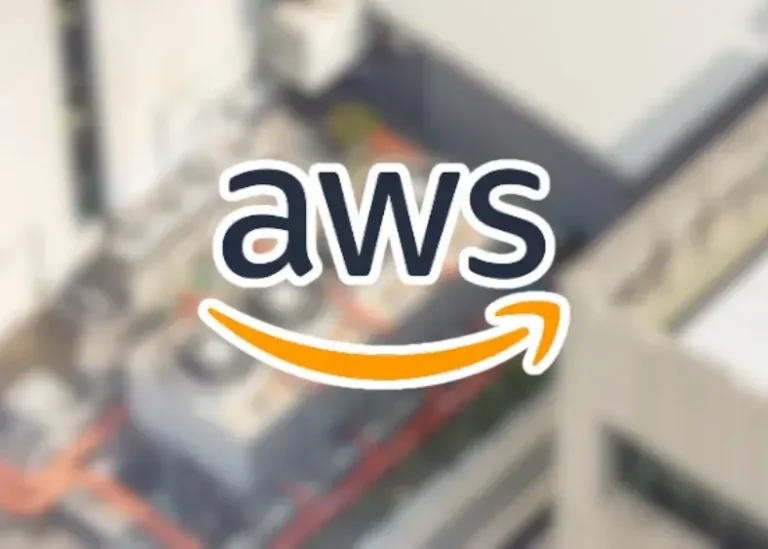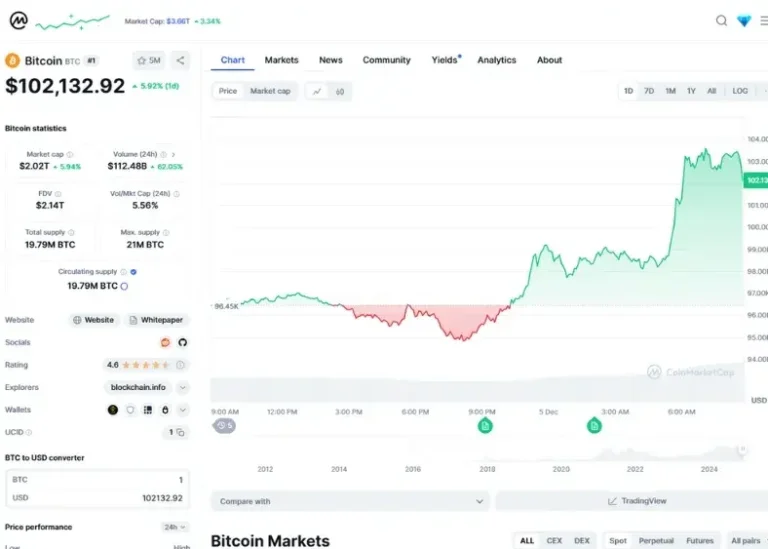August 7, 2025 – OpenAI today launched GPT-5, its long-awaited flagship artificial intelligence model, in a move poised to reshape the technology landscape. More than two years after the release of GPT-4, the new system is being positioned as a monumental leap in intelligence and usability, and in a significant strategic shift, it is being made immediately available to all users, including those on the free tier of ChatGPT.
During a livestreamed launch event, OpenAI CEO Sam Altman framed the new model’s capabilities in starkly evolutionary terms. “GPT-3 sort of felt like talking to a high school student,” he said, while “GPT-4 felt like you’re talking to a college student.” With GPT-5, Altman declared, the experience is akin to interacting with “a legitimate PhD-level expert in anything, in any area you need, on demand”. Underscoring the magnitude of the upgrade, he later added that after using the new model, returning to its predecessor was “quite miserable,” comparing the experience to using an old iPhone.
The launch arrives at a pivotal moment, bookending a period of intense investment, hype, and public anxiety surrounding generative AI. It also serves as a powerful competitive maneuver. By rolling out its most advanced model to a user base of 700 million people at no initial cost, OpenAI is not only democratizing access to state-of-the-art AI but also aggressively defending its market leadership against formidable rivals like Google, Anthropic, and xAI. This “free for all” approach raises the barrier for competitors, forcing them to match a new, higher standard for free-tier offerings or risk ceding ground in the escalating AI arms race.
At the heart of GPT-5 is its most significant innovation: a “unified system” architecture that eliminates the need for users to manually select the best model for a given task—a persistent point of confusion in previous versions. The new system is now available across the ChatGPT platform and through OpenAI’s API, signaling an immediate and widespread impact on consumers, developers, and businesses worldwide.
What Makes GPT-5 Different
The core architectural change in GPT-5 addresses a fundamental challenge in user experience and operational efficiency. Previously, users were often forced to choose between different models, such as the fast and responsive GPT-4o for general queries or the more powerful but slower “o-series” models for tasks requiring deep reasoning, without always knowing which was appropriate.
GPT-5 replaces this fragmented system with an integrated, intelligent architecture. This “unified system” is composed of several specialized components that work in concert. According to OpenAI’s system card, these include a smart and efficient primary model (
gpt-5-main) for most questions and a deeper, more computationally intensive reasoning model (gpt-5-thinking) for more difficult problems.
| Model Name | Description / Intended Use Case | Availability | API Pricing (Standard Tier, per 1M tokens) |
| GPT-5 | The standard, high-performance model designed for logic and multi-step tasks. | All ChatGPT users (with limits) and API. | Input: $1.25 / Output: $10.00 |
| GPT-5 Pro | A premium version with extended reasoning for the most demanding tasks and deeper analysis. | Exclusive to ChatGPT Pro subscribers. | Not available via API. |
| GPT-5 mini | A lightweight version for cost-effective deployments and faster responses. | API and as a fallback for ChatGPT Free/Plus users. | Input: $0.25 / Output: $2.00 |
| GPT-5 nano | Optimized for high-speed, ultra-low latency query responses. | API only. | Input: $0.05 / Output: $0.40 |
| GPT-5 chat | Designed for advanced, multimodal, and context-aware conversations in enterprise settings. | API (gpt-5-chat-latest). | Input: $1.25 / Output: $10.00 |
The linchpin of this new architecture is a “real-time router” that acts as the system’s brain. This router automatically analyzes the user’s prompt and decides which underlying model is best suited to handle it, based on factors like conversational complexity, the need for external tools, or even explicit user commands like “think hard”. This intelligent routing allows the system to be both fast for simple requests and deeply analytical for complex ones.
Crucially, this router is designed to improve over time. It is continuously trained on real-world signals, such as when users manually switch models or which types of responses they rate highly for correctness, allowing the system to become progressively more efficient and effective. This approach is an elegant engineering solution to the scaling dilemma that pits computational cost against raw capability. By reserving the expensive, high-compute reasoning for when it is absolutely necessary, OpenAI can optimize its operational costs at an immense scale while simultaneously delivering a superior and more intuitive user experience.
The full GPT-5 family, some details of which were revealed in a GitHub leak just before the official announcement, includes a range of models tailored for different applications. Alongside the main and thinking models, OpenAI is releasing gpt-5-nano for high-speed, low-latency tasks via its API, and gpt-5-chat for advanced, multimodal enterprise conversations.
Access and Pricing: What GPT-5 Will Cost You!
OpenAI is rolling out GPT-5 with a tiered access structure designed to serve everyone from casual users to large-scale enterprise developers.
For ChatGPT Users
- Free Tier: All users with a ChatGPT account get access to the base GPT-5 model. Usage is subject to limits, after which the system will automatically switch to the lighter
GPT-5 minimodel to ensure continuous availability. - Plus Tier ($20/month): Subscribers to the Plus plan receive “significantly” higher usage limits for the main GPT-5 model compared to free users.
- Pro Tier ($200/month): This premium tier offers unlimited access to the base GPT-5 model and, crucially, exclusive access to
GPT-5 Pro.GPT-5 Prois described as the highest-performing version of the model, featuring extended reasoning capabilities for the most demanding tasks.
For Developers (API)
Through its API, OpenAI is offering developers three sizes of the new model: gpt-5, gpt-5-mini, and gpt-5-nano, allowing them to balance performance, cost, and latency. The pricing structure for the standard tier is aggressively competitive, most notably cutting the input token cost of the flagship model in half compared to its predecessor, GPT-4o.
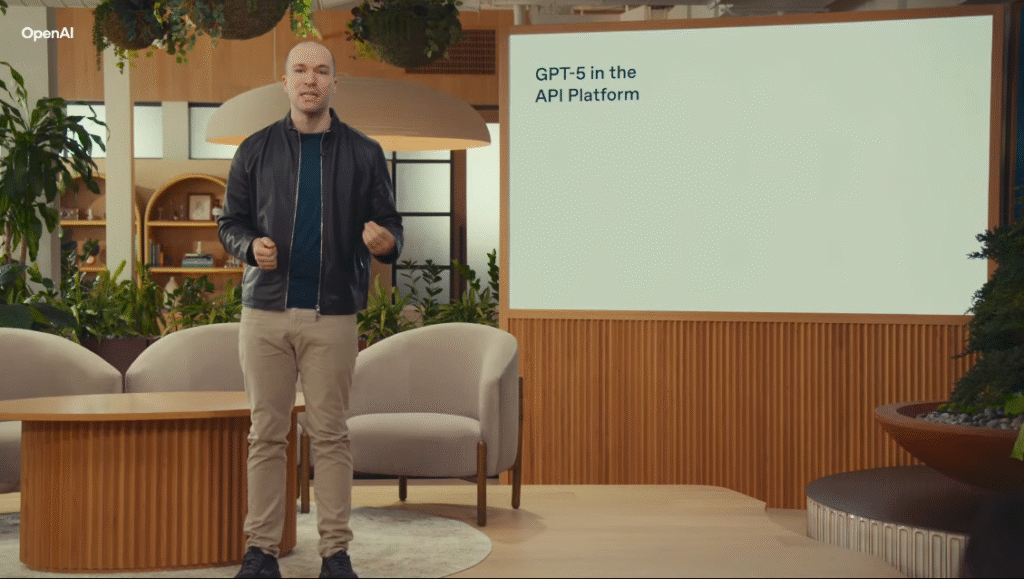
This pricing reveals a sophisticated market strategy. By making its most powerful general model significantly cheaper, OpenAI is encouraging widespread adoption and directly challenging competitors on cost. Simultaneously, the creation of the ultra-premium GPT-5 Pro tier for its highest-paying customers allows the company to maximize revenue from the enterprise segment that values performance above all else.
| Model | Input Cost (per 1M tokens) | Output Cost (per 1M tokens) |
| gpt-5 | $1.25 | $10.00 |
| gpt-5-mini | $0.25 | $2.00 |
| gpt-5-nano | $0.05 | $0.40 |
| For Comparison: gpt-4o | $2.50 | $10.00 |
Revolution in Capabilities
Beyond its novel architecture, GPT-5 delivers state-of-the-art performance across a range of critical domains, from software development to factual accuracy and creative collaboration.
A Coder’s New Co-Pilot
OpenAI describes GPT-5 as its strongest coding model to date. Backed by new records on major industry benchmarks: Benchmark What It Measures GPT-5 Score SWE-bench Verified Real-world software engineering skills 74.9% Aider Polyglot Code editing across multiple languages 88% Beyond Simple Code Completion: During the launch event, GPT-5 built a fully functional, visually polished language-learning web app from a single conversational prompt. This shows a clear push to let anyone from seasoned developers to people with no coding background turn their ideas into working software.
The CEO of the coding software maker Cursor called it the “smartest model [they’ve] used,” while the team at Vercel described it as the “best frontend AI model, hitting top performance across both the aesthetic sense and the code quality”.
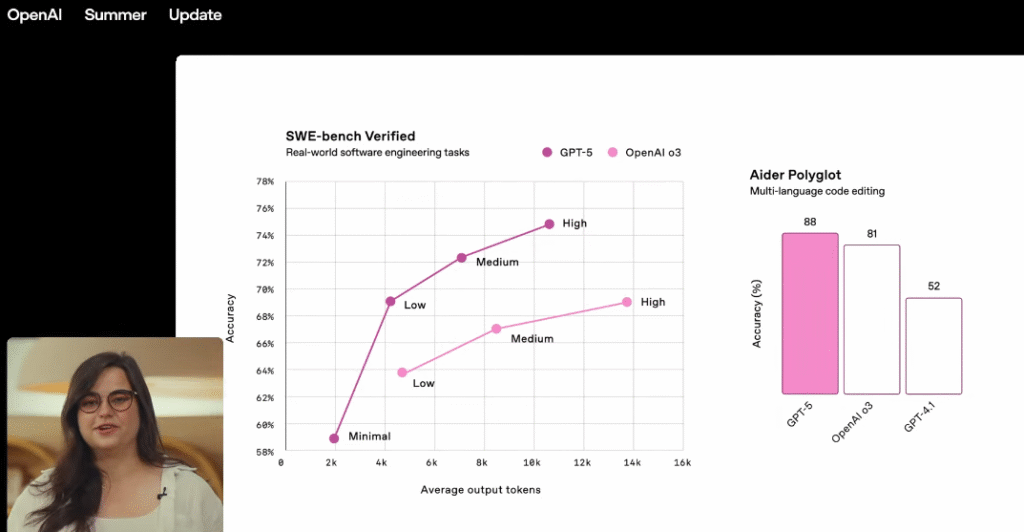
For developers, OpenAI has introduced a suite of new API features that provide more granular control over the model’s behavior. These include a verbosity parameter to adjust the length of responses, a reasoning_effort parameter to balance speed against quality, and a new custom tools type that allows the model to interact with external tools using simpler plaintext commands instead of rigid JSON formats. These enhancements signal a move to position GPT-5 not merely as a coding assistant but as a foundational platform for building a new generation of sophisticated, AI-native applications.
Google connections for ChatGPT
Starting next week, ChatGPT Pro users will be able to link their Gmail, Google Calendar, and Google Contacts directly to ChatGPT. No more jumping between tabs to see if you’re free next Tuesday or hunting through endless threads for that one email you swore you’d reply to but didn’t.
Once linked, ChatGPT will pull in only what it needs to answer your requests. OpenAI promises it will grab the bare minimum of information—and only when it’s actually useful.
You won’t have to say things like “check my calendar” or “find that contact.” If your request requires it—say, setting up a meeting—ChatGPT will automatically check your availability, choose a time that works, and even draft the email for you. Other subscription tiers will gain access to these integrations in the future, so it won’t be exclusive to Pro users for long.

These updates, powered by GPT-5, point to OpenAI’s broader ambition: making its AI an integral part of your daily life, not just a tool you use occasionally and then get frustrated with. Improved reasoning means less work fixing its answers. “Vibe coding” shifts the AI from simply imitating code to actually understanding your intent when building software. Personality options, colors, more lifelike voices, and access to your inbox and calendar make the AI feel tailored to you—far from a generic, one-size-fits-all assistant.
GPT-5 simulates awareness more convincingly than any version before it. This could help it blend seamlessly into daily routines, becoming as natural to use as a smartphone—or at least, that’s the vision OpenAI and its investors are hoping to bring to life.
The End of Hallucinations?
A central focus of GPT-5’s development has been tackling the persistent problem of AI “hallucinations”—the tendency of models to generate false information confidently. According to OpenAI’s internal evaluations, GPT-5’s responses are approximately 45% less likely to contain a factual error than GPT-4o and a staggering 80% less likely than the previous reasoning model, o3.
This leap in reliability is particularly evident in high-stakes domains like healthcare. On HealthBench, a benchmark designed to test accuracy in medical scenarios, GPT-5 exhibited a hallucination rate of just 1.6%, a dramatic improvement over GPT-4o’s 12.9%.
This enhanced truthfulness is partly attributed to a new safety training approach called “safe completions.” As detailed in the model’s system card, instead of simply refusing to answer a potentially sensitive or borderline prompt, GPT-5 is trained to provide a helpful, high-level response that stays within safety constraints and cannot be used to cause harm.
A More Human Collaborator
GPT-5 also introduces significant improvements in creative and collaborative tasks. OpenAI claims the model can help users transform rough ideas into “compelling, resonant writing with literary depth and rhythm”. This is supported by an expanded context window of at least 256,000 tokens, allowing for deeper memory retention and more coherent conversations over long documents or complex projects.
For the first time, users can also customize the chatbot’s personality. A new research preview offers four pre-set personas—Cynic, Robot, Listener, and Nerd—that can be selected to adjust the tone and style of interaction without needing to write custom instructions for every prompt.
Voice Mode
ChatGPT’s Voice Mode is getting a serious audio upgrade. OpenAI is launching a sharper, more capable version that not only works with custom GPTs but also fine-tunes its tone and speaking style to match your instructions and overall mood.
Want it snappier? Slower? Warmer? You can set the vibe however you like. For ChatGPT Plus users, voice replies are now almost limitless, while free users still get to enjoy the feature for a few hours each day—perfect for hands-free chats.
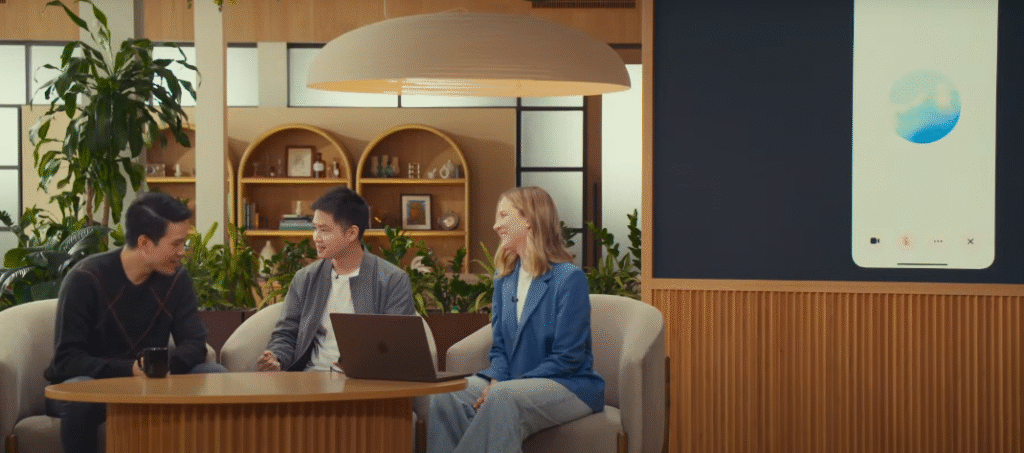
To keep things simple, the old Standard Voice Mode will disappear entirely within 30 days. After that, everyone will be using the same upgraded experience.
You May Like: Google Pixel 10 Series Is Launching Soon – Specs and Prices Inside | 2025
Journey from GPT-3 to GPT-5
To fully appreciate the significance of GPT-5, it is essential to view it within the context of its predecessors. The evolution from GPT-3 to GPT-5 represents a rapid and transformative journey from a probabilistic text generator to a sophisticated, multimodal reasoning engine.
GPT-3, released in June 2020, was a landmark model that demonstrated an unprecedented ability to generate human-like text. With 175 billion parameters, it was a purely unimodal (text-only) system with a relatively small context window of 2,048 tokens. While revolutionary for its fluency, it was notoriously prone to “hallucinating” or fabricating information and lacked robust reasoning capabilities.
GPT-4, launched in March 2023, marked a significant step forward in both accuracy and capability. It introduced multimodality, allowing it to accept image inputs in addition to text, and dramatically expanded the context window to 128,000 tokens in its Turbo variant. It was more nuanced, steerable, and factually reliable than its predecessor. The subsequent release of
GPT-4o in May 2024 further enhanced speed and real-time multimodal interaction.
GPT-5, arriving in August 2025, represents another paradigm shift. Its defining features are the unified reasoning architecture, a drastic reduction in hallucinations, and even greater agentic capabilities. Official documentation reveals that GPT-5 is approximately 80% less likely to contain a factual error than OpenAI’s previous top reasoning model, o3. The context window has also been expanded to at least 256,000 tokens, enabling longer and more coherent interactions, with some reports suggesting it could eventually reach up to 1 million tokens.
| Feature | GPT-3 (2020) | GPT-4 / 4o (2023-24) | GPT-5 (2025) |
| Core Identity | “High School Student” | “College Student” | “PhD-Level Expert” |
| Architecture | Monolithic | Monolithic (with variants) | Unified System (with Router) |
| Parameters | ~175 Billion | Undisclosed (Est. >1 Trillion) | Undisclosed |
| Modality | Text-only | Text + Image Input | Text, Image (Video/Audio planned) |
| Max Context Window | ~2k-4k tokens | ~128k tokens | ~256k+ tokens |
| Key Strength | Human-like text generation | Improved accuracy & multimodality | Deep reasoning & reliability |
| Key Weakness | High hallucination rate | Confusing model selection | Potential for over-reliance |
GPT-5 vs. The World’s Top AI Models
While GPT-5 represents a major advancement for OpenAI, it enters a fiercely competitive landscape populated by powerful models from rivals, each with distinct strengths. Benchmark data and expert analysis show that while GPT-5 is a formidable all-around performer, the era of a single, undisputed “best” model may be over.
Clash of the Titans: GPT-5 vs. Grok 4
Elon Musk’s xAI has positioned its Grok 4 model as a leader in raw reasoning. This claim is substantiated by results from the ARC-AGI benchmark, a test designed to measure abstract problem-solving rather than rote memorization. On the most difficult version of the test, ARC-AGI-2, Grok 4 (Thinking) scored approximately 16%, outperforming GPT-5 (High) at 9.9%. Musk was quick to declare victory, stating on X that “Grok 4 Heavy was smarter 2 weeks ago than GPT5 is now”. However, this performance comes at a steep price, with Grok 4 costing up to four times as much per task on the benchmark. For many applications, GPT-5’s strong performance at a much lower cost makes it the more practical choice.
GPT-5 vs. Claude 4.1
In the crucial domain of software development, Anthropic’s Claude 4.1 has established itself as a top-tier competitor. On the real-world coding benchmark SWE-bench Verified, the two models are in a statistical dead heat, with GPT-5 scoring 74.9% and Claude Opus 4.1 at 74.5%. Some developers maintain a preference for Claude’s performance in specific, narrow coding domains, particularly for frontend web development. For many, the deciding factor may once again be cost; GPT-5’s API is significantly cheaper than Claude Opus 4.1’s, a compelling advantage for businesses deploying AI coding assistants at scale.
GPT-5 vs. Gemini 2.5 Pro
The rivalry with Google’s Gemini 2.5 Pro is less about individual benchmarks and more about competing platform visions. Gemini boasts a massive 1-million-token context window—several times larger than GPT-5’s—and native audio processing capabilities that set it apart for tasks involving long documents or voice interaction. On benchmarks measuring PhD-level reasoning, such as GPQA, the models are extremely close competitors, with GPT-5 Pro holding a slight edge. The competition is increasingly focused on which company can best integrate these powerful reasoning and creative capabilities into a seamless, unified ecosystem for users and developers.
This competitive landscape suggests the AI market is fracturing. Rather than a single model dominating all tasks, different systems are excelling in specialized areas. For advanced users and businesses, the optimal strategy may no longer be choosing one provider but orchestrating a multi-model approach, routing specific tasks to the AI best suited for the job.
You May Like: Kali Linux vs. Kali Purple: Everything You Need to Know
Hype, Hope, and Existential Fear
The launch of GPT-5 is accompanied by a complex and often contradictory narrative shaped by Sam Altman himself. On one hand, he champions the model as a revolutionary tool for productivity and creativity. On the other, he voices profound and unsettling concerns about the technology’s power and trajectory.
In recent interviews, Altman has repeatedly compared the development of advanced AI to the Manhattan Project, the World War II effort that produced the first atomic bomb. “There are moments in science when people look at what they’ve created and ask, ‘What have we done?'” he reflected, suggesting that GPT-5 represents such a moment. This analogy frames the technology not merely as a product but as a world-altering force with potentially irreversible consequences.
He has also shared deeply personal reactions to the model’s capabilities, admitting to feeling “useless relative to the AI” after it solved a complex problem that he could not. This “personal crisis of relevance” speaks to a broader societal anxiety about a future where human intellect is surpassed by artificial intelligence.
These cautionary statements exist in tension with the model’s commercial rollout and highlight the significant ethical questions that models of this power raise. Experts warn of the potential for GPT-5 to amplify societal biases present in its training data, accelerate job displacement in white-collar professions, and enable the creation of highly sophisticated misinformation at an unprecedented scale.
While Altman describes GPT-5 as a “significant step along our path to AGI” (Artificial General Intelligence), most experts agree that this technology, while impressive, is not true AGI. However, the dual narrative of immense promise and profound risk serves a strategic purpose. It allows OpenAI to drive market excitement while simultaneously positioning itself as a thoughtful steward of a powerful technology, thereby shaping the inevitable regulatory conversations to come.
The Road Ahead: What GPT-5 Means for the Future
The release of GPT-5 marks the beginning of a new chapter in our relationship with artificial intelligence. It is a major leap forward in reliability, reasoning, and usability, setting a new industry standard and dramatically accelerating the AI arms race.
For industries like software development and content creation, the impact will be immediate and transformative. The model lowers the barrier to creating complex applications and high-quality written material, shifting the focus of human work from generation to curation, strategy, and oversight.
The rapid succession of powerful model releases from OpenAI and its competitors suggests that the pace of innovation is not slowing. Despite theories about diminishing returns from simply scaling up models, the industry continues to find new dimensions on which to innovate, promising even more powerful systems in the near future.
Ultimately, the most profound impact of GPT-5 may be on the individual. By placing “PhD-level” expertise in the hands of hundreds of millions of people, OpenAI is democratizing access to knowledge and advanced capabilities on a scale never before seen. This presents extraordinary opportunities for learning, creativity, and problem-solving. It also brings new challenges, forcing society to grapple with questions of over-reliance, intellectual atrophy, and the critical importance of human judgment in a world where expert-level intelligence is no longer a scarce resource but an abundant, on-demand utility.

